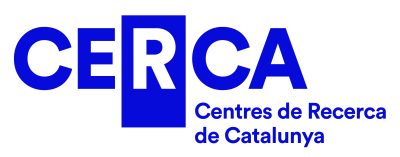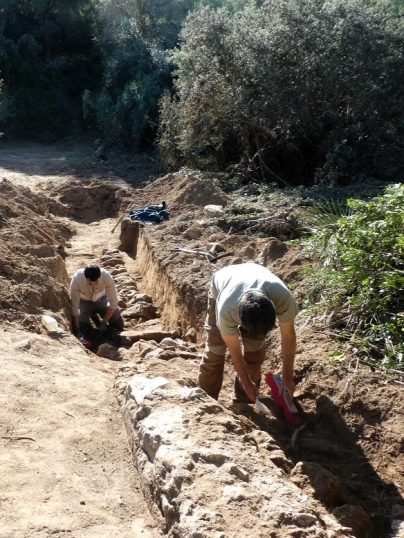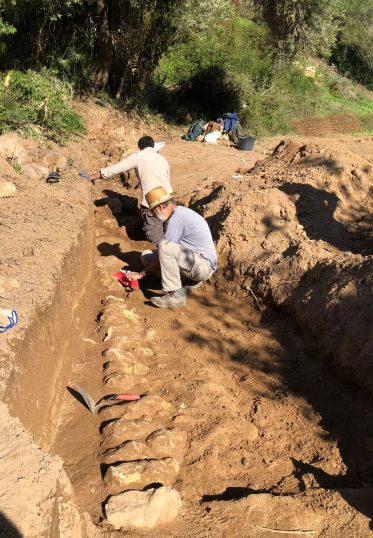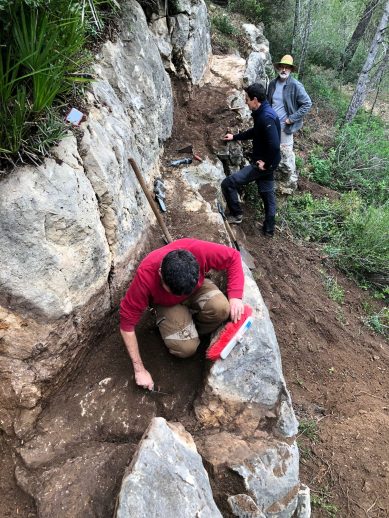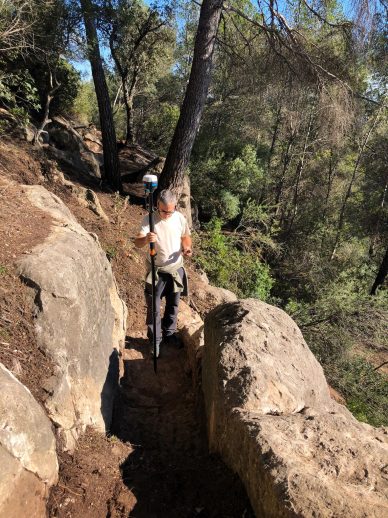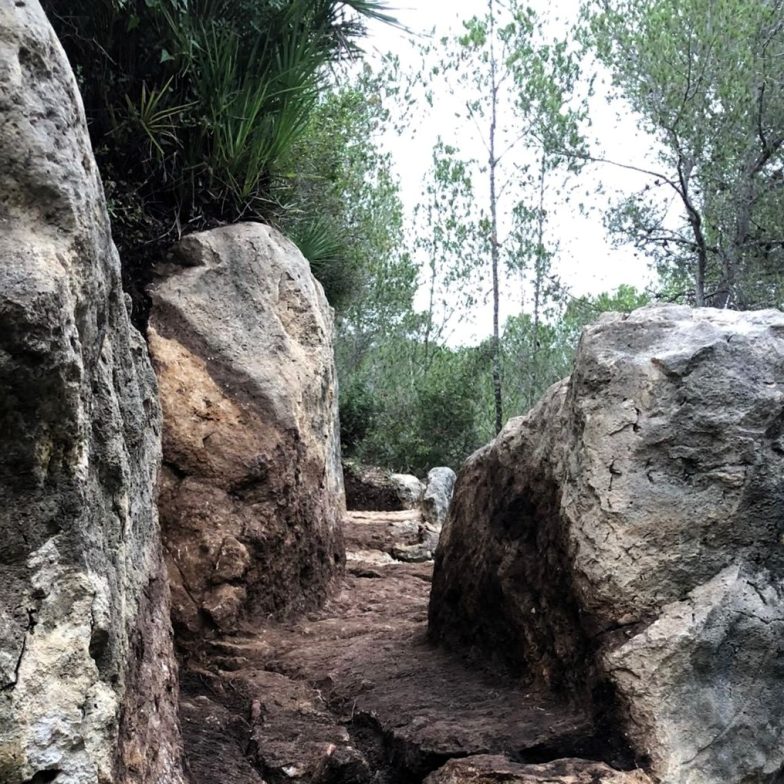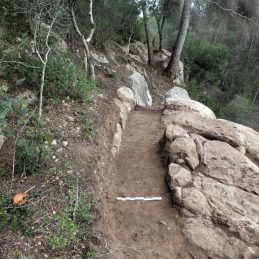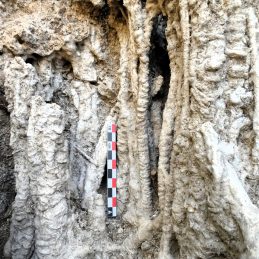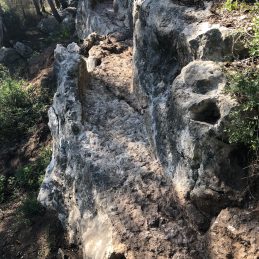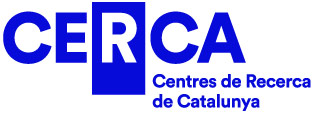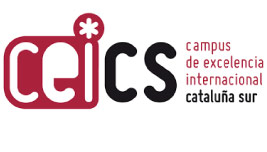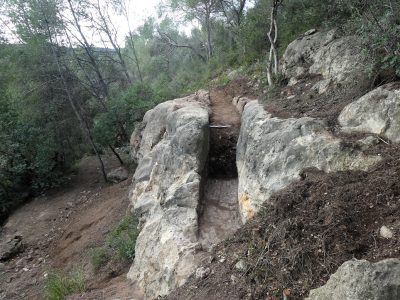
Three new archaeological interventions deepen our understanding of the Roman infrastructure of ancient Tarraco.
This past November, a team from the MIRMED research group at the Catalan Institute of Classical Archaeology (ICAC) carried out new archaeological excavations at the Roman aqueducts of Camp de Tarragona. These works have expanded our knowledge of these infrastructures, providing significant insights into the layout and construction of the aqueducts.
The Pont del Tupino in Els Pallaresos
The first intervention occurred at the Pont del Tupino in Els Pallaresos, near Sant Salvador (Tarragona). The work focused on better understanding the remains of the Roman bridge that once stood at this site.
During the excavation, part of the northern abutment of the bridge was uncovered, along with a small section of the aqueduct to the south. The work was particularly challenging due to heavy rainfall at the beginning of November, which flooded the area with approximately two metres of water. The N-240 road wall acted as a temporary dam, leaving the excavated area completely submerged.
One noteworthy discovery was a dry-stone margin located half a metre below the ground, aligned with the Roman bridge. This finding suggests that the bridge’s foundations may lie much deeper and that the Roman-era topography was vastly different from today, with a ravine that is now filled with sediment.
La Cativera in El Catllar
In El Catllar, the team worked in the area of La Cativera, near a cave with significant prehistoric remains previously partially excavated by researchers from IPHES-CERCA. Earlier surveys had identified a section of the left-hand aqueduct of Baix Gaià here.
The excavation focused on a small ravine beneath the road to the La Cativera residential area, approximately 500 metres north of the AVE railway line. To span this gap, the Romans constructed a bridge to carry the aqueduct. The work involved clearing the site and digging two trenches, one at each end of the now-vanished bridge.
The most remarkable discovery was a small wooden bridge. At one end, the team identified the junction where the wooden canal connected to the stone aqueduct. This area revealed travertine deposits that had preserved the shape of the wooden canal, along with calcite formations, including stalactites and stalagmites, created by ancient water leaks.
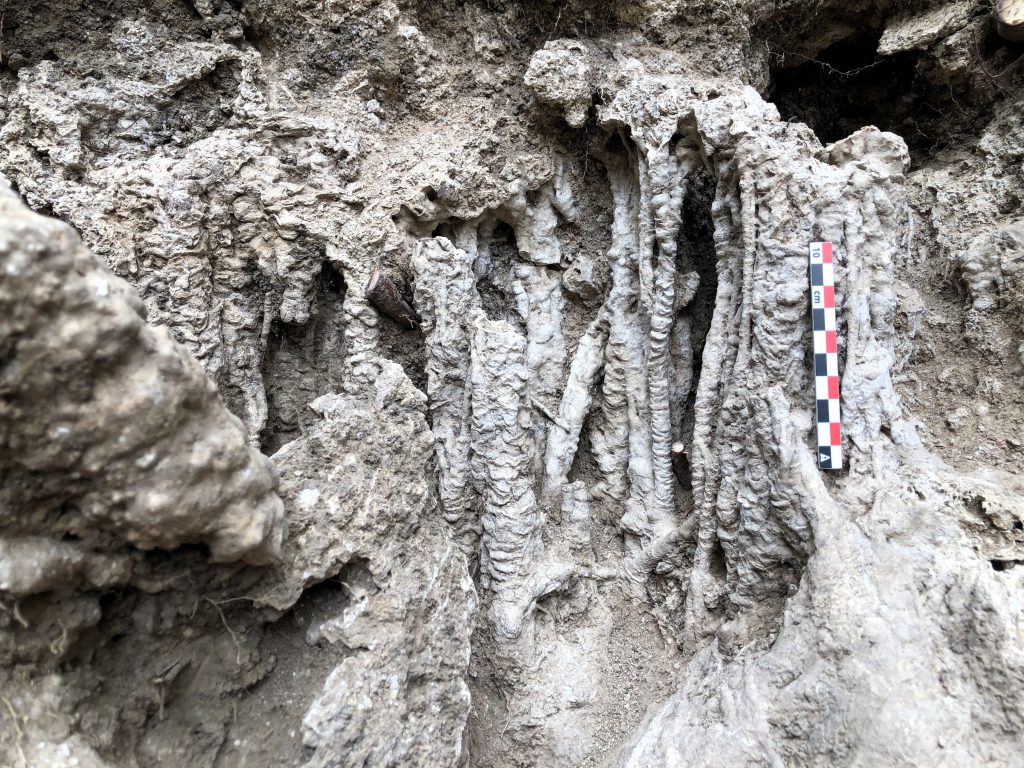
A Long Stretch in La Riera
Finally, in La Riera de Gaià, the team investigated a site located between the village and Ardenya. There, they uncovered a 110-metre-long section of the left-hand Baix Gaià aqueduct—the most distant segment discovered to date from its water source in the municipality of Vespella.
This stretch, located on steep terrain covered with dense vegetation, was cleared and documented graphically. In some sections, the interior of the channel was excavated to study its features. The channel is entirely carved into the rock, with dimensions of about 65-70 cm wide and a depth of up to 1.75 metres.
An Intensive Campaign with a Specialised Team
The excavation campaign spanned two weeks and involved a team comprising archaeologists, assistants, a surveyor, and specialised machinery. The project was directed by Dr Jordi López Vilar, whose recent research has focused on the study of the water supply to Tarraco and its surrounding villas.
About the Catalan Institute of Classical Archaeology (ICAC)
The Catalan Institute of Classical Archaeology (ICAC-CERCA) is a CERCA center established as a consortium in 2003 by the Government of Catalonia and the Rovira i Virgili University. It is a Catalan institution with an international scope, at the forefront of research and conservation of archaeological heritage. Its headquarters are in Tarragona, a city recognized as a UNESCO World Heritage Site in 2000. Its researchers work to understand the past, through the study of archaeological remains, and promote the preservation of the historical legacy. We are CERCA!
For more information, visit www.icac.cat.
